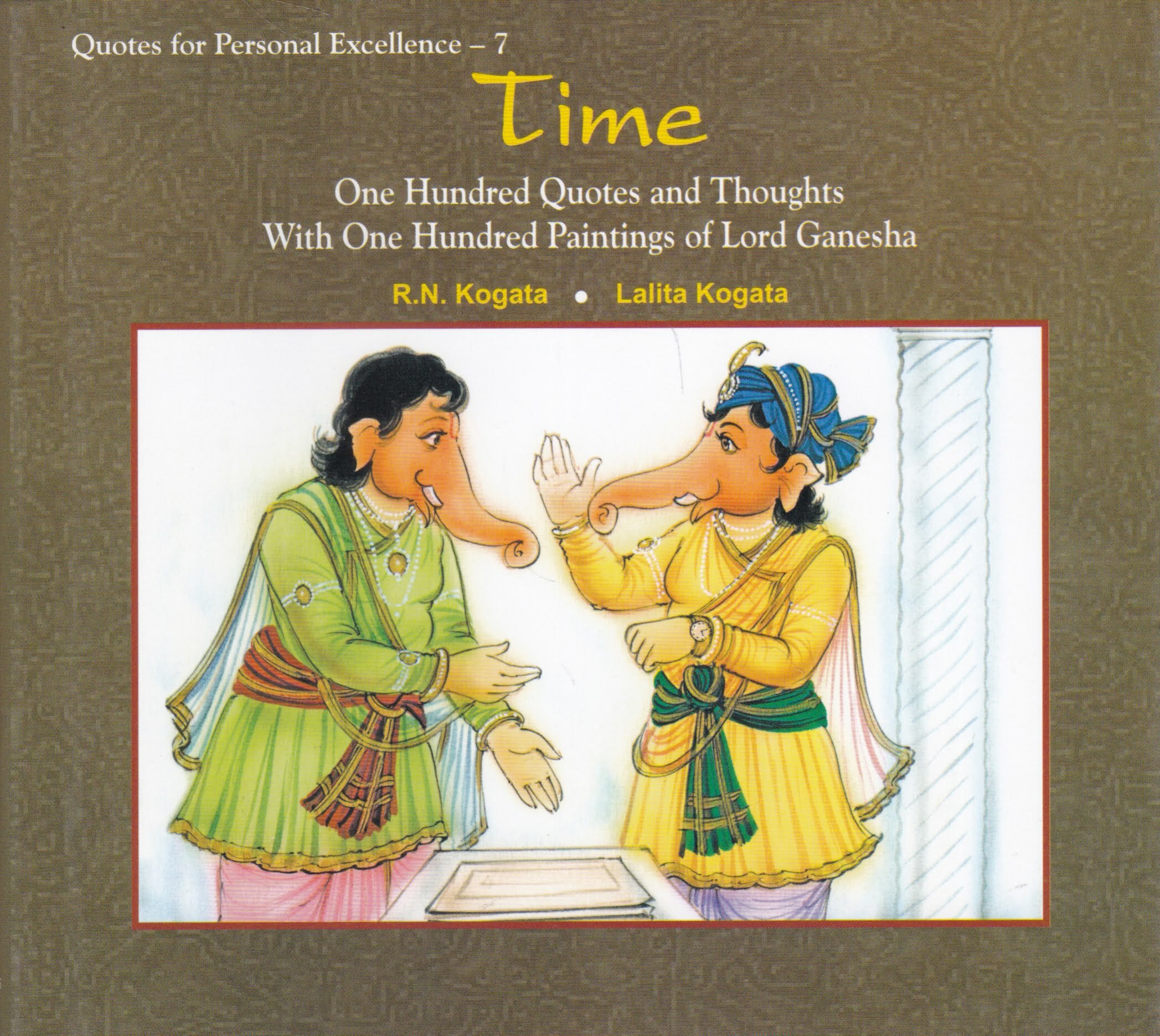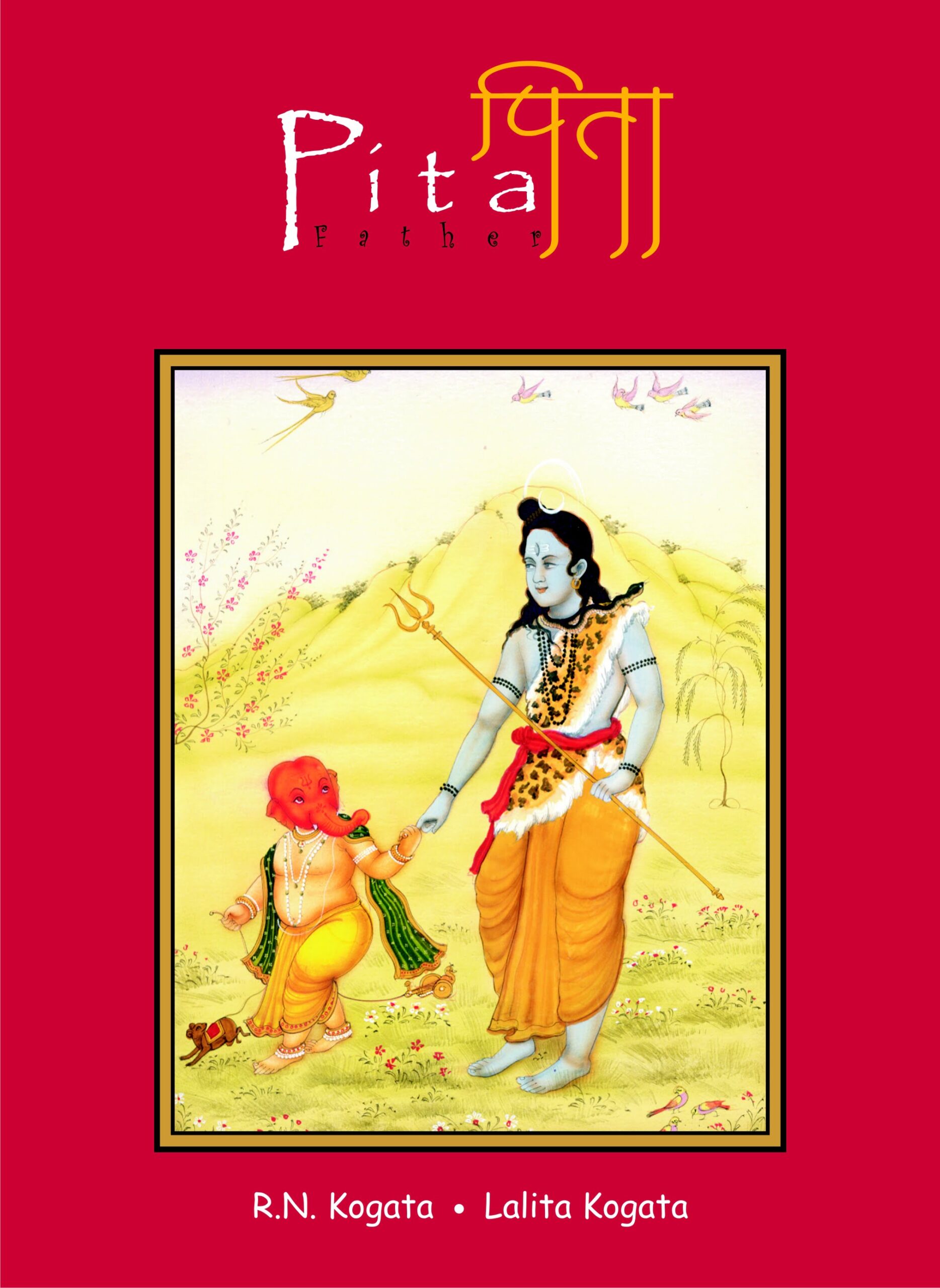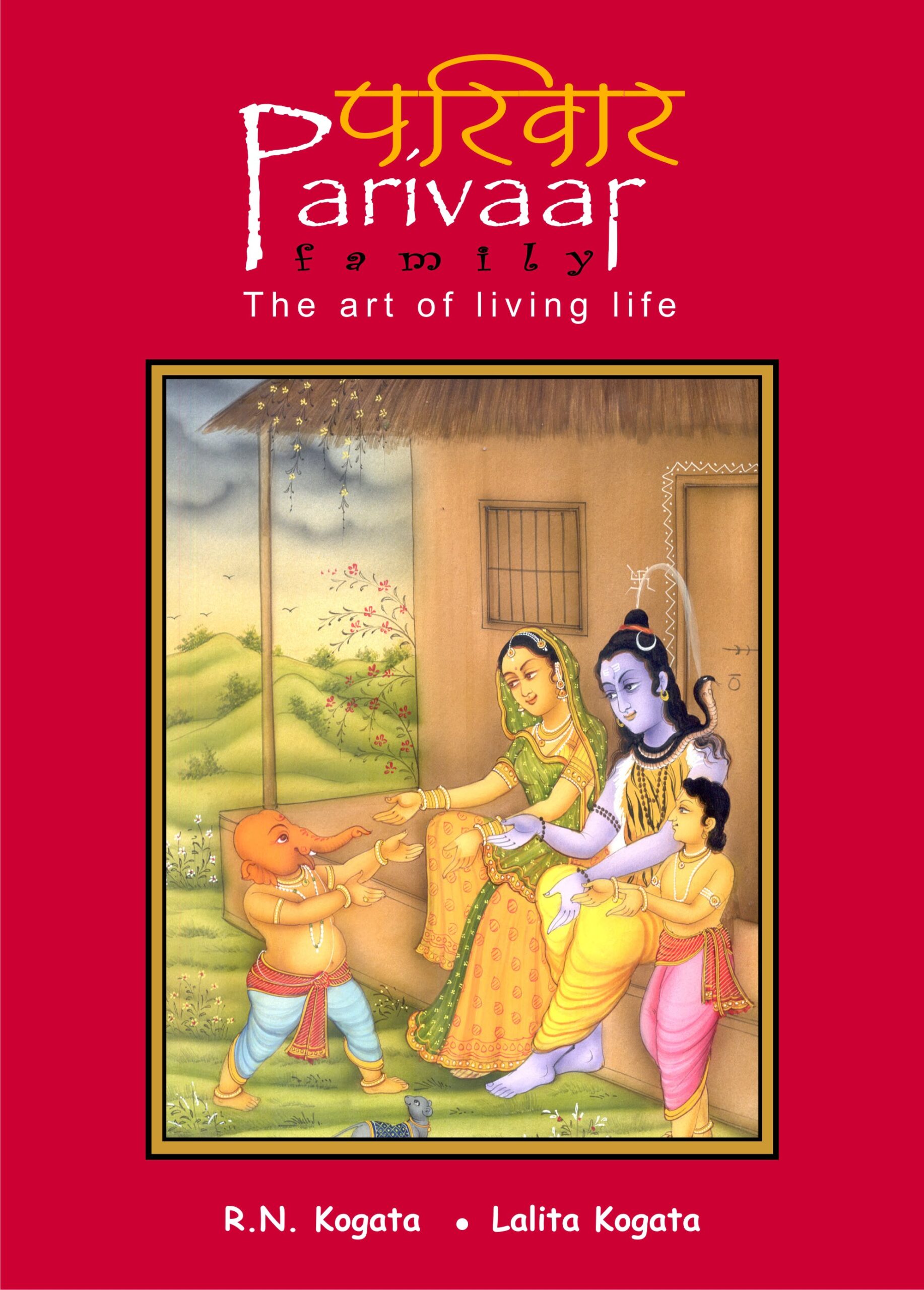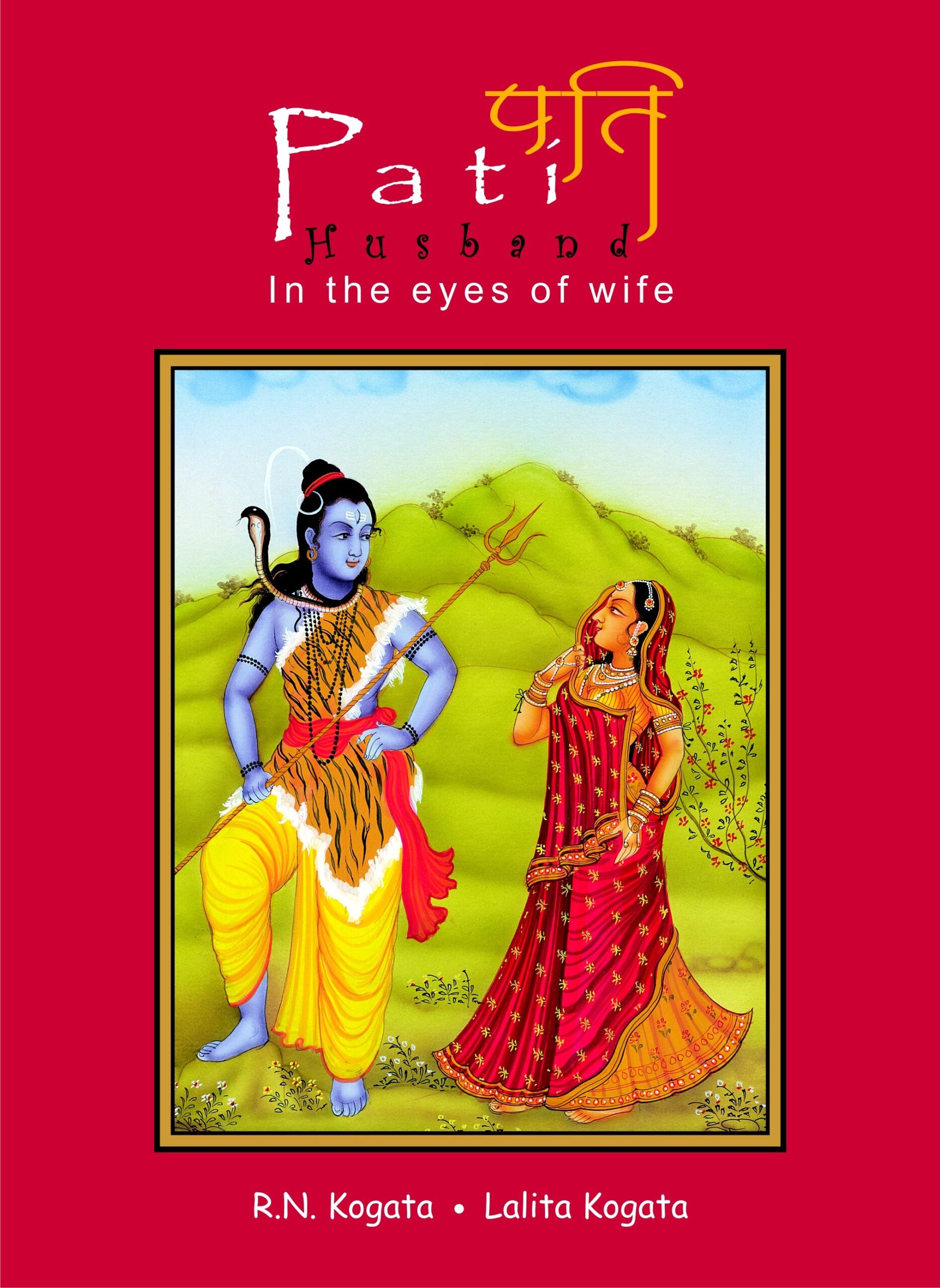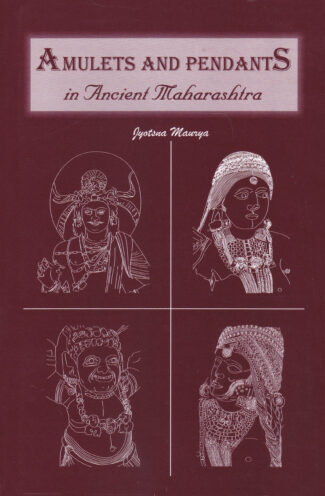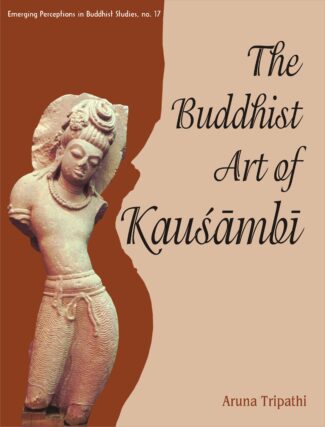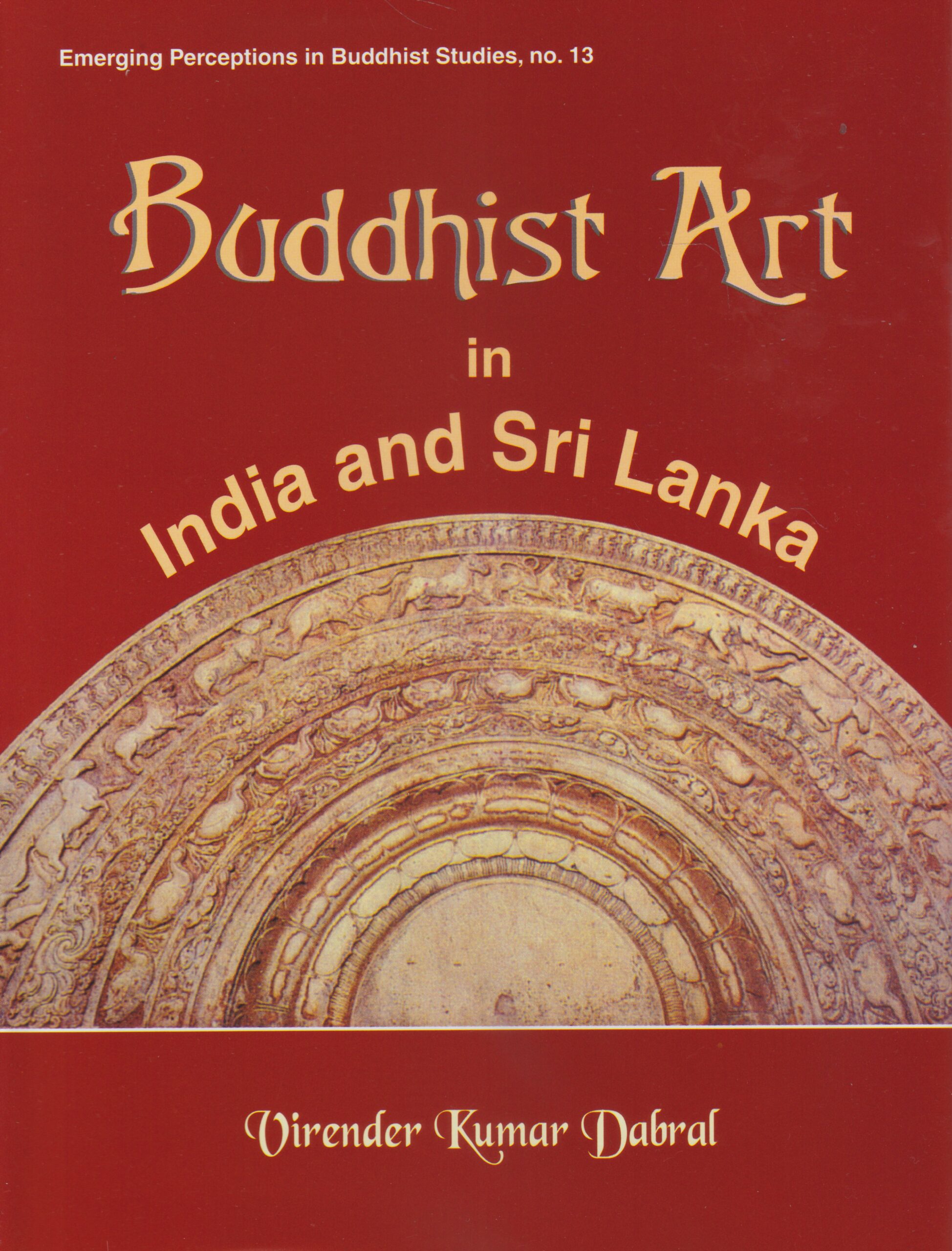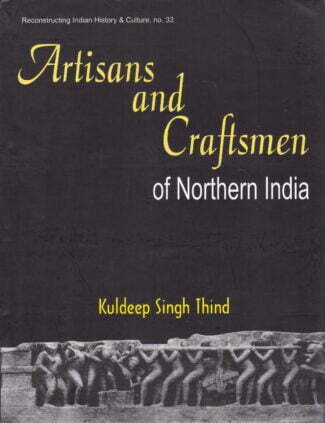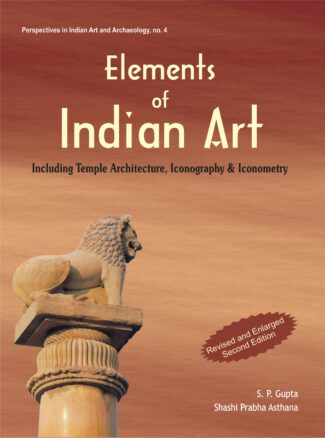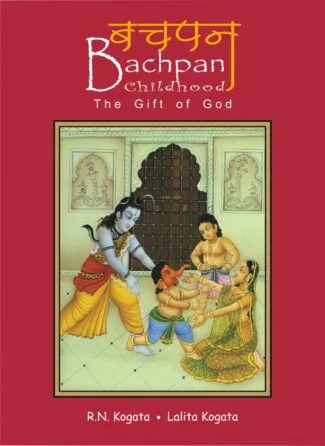
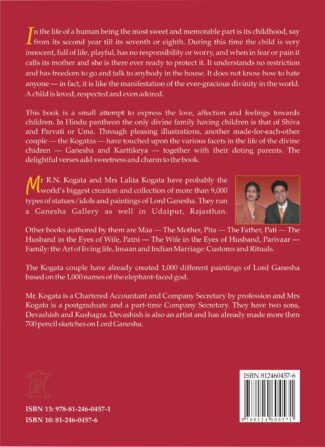
Bachpan-Childhood...
Bachpan-Childhood
The Gifted God by: R.N. KogataThis book is a small attempt to express the love, affection and feelings towards children. Through pleasing illustrations, the authors have touched upon the various facets in the life of a child. Delightful verses add sweetness and charm to the book.
₹180.00 Original price was: ₹180.00.₹162.00Current price is: ₹162.00.
ISBN: 9788124605967
Year Of Publication: 2011
Edition: 1st
Pages : iv, 28p.
Language : English
Binding : Paperback
Publisher: D.K. Printworld Pvt. Ltd.
Size: 24
Weight: 150
In the life of a human being the most sweet and memorable part is its childhood, say from its second year till its seventh or eighth. During this time the child is very innocent, full of life, playful, has no responsibility or worry, and when in fear or pain it calls its mother and she is there ever ready to protect it. It understands no restriction and has freedom to go and talk to anybody in the house. It does not know how to hate anyone — in fact, it is like the manifestation of the ever-gracious divinity in the world. A child is loved, respected and even adored.
This book is a small attempt to express the love, affection and feelings towards children. In Hindu pantheon the only divine family having children is that of Shiva and Parvati or Uma. Through pleasing illustrations, another made-for-each-other couple — the Kogatas — have touched upon the various facets in the life of the divine chidren — Ganesha and Karttikeya — together with their doting parents. The delightful verses add sweetness and charm to the book.

- Sale!Amulets and Pendants in Ancient Maharashtra (3rd c. bc to 3rd c. ce) by: Jyotsna Maurya
₹220.00Original price was: ₹220.00.₹198.00Current price is: ₹198.00.The book documents Indias rich tradition of ornamentation as reflected in its numerous and varied collection of amulets and pendants recovered from archaeological excavations in Maharashtra. It studies the significance of these ornaments as a visible expression of the artistic excellence and cultural wealth of the ancient Indian civilisation particularly at the time of the great Mauryan and Satvahana dynasties. Discussing the evolution of these portable charms against their socio-economic and religious background, the authoress examines the different types of amulets and pendants excavated, the techniques used in making them, their parallels in literary and sculptural representations, and Buddhist influence on them. Giving insights into the sources of raw materials used in these charms, she takes up in detail the trade relations of a specific site with other contemporary sites. With a number of figures and maps, the work promises to be useful to both scholars and students of Indology focussing on facets of Indian culture.
- Sale!Buddhist Art of Kausambi by: Aruna Tripathi
₹2,500.00Original price was: ₹2,500.00.₹2,250.00Current price is: ₹2,250.00.The Upanishads capture the quintessence of Indian spiritual wisdom unfolding deepest, highly perceptive reflections on human existence and how it is related to the mysterious cosmos. Authored by enlightened seers over the period of 1500-200 bc., the Upanishadic message is a magnificent vision that raises human consciousness to sublime heights. One of the major centres of Buddhist art in ancient times, Kausambi provides evidence of an uninterrupted art tradition spanning centuries. Pointing to the scant attention Kausambi has received from scholars in the past, this work attempts to highlight its art treasures through a study of its stone sculptures. Based on scrutiny of stone sculptures found at various sites in Kausambi and its vicinity and housed in different museums, it presents perhaps the first extensive documentation of the Buddhist art of the region from the Mauryan to post-Gupta period. It examines in detail over 300 stone sculptures, paying special attention to their iconographic features, types of stone, techniques of carving, grinding and polishing and their aesthetic appeal. All this comes with a background throwing light on the history of Kausambi and its association with Buddhism, the early archaeological explorations in the region, and the individuality and uniqueness of Kausambi art as compared to Mathura and Sarnath schools. The book presents over 225 black-and-white and over 50 coloured photographs of Buddhist sculptures which are neatly classified and systematically analysed. It would prove invaluable to scholars and students of Buddhist art.
- Sale!Buddhist Art in India and Sri Lanka by: Virender Kumar Dabral
₹1,000.00Original price was: ₹1,000.00.₹900.00Current price is: ₹900.00.The book is a comprehensive study of the evolution and development of Buddhist visual art in India and Sri Lanka, taking into consideration their diverse forms and the impact of regional trends on them. Consulting a number of original sources including scholarly works in the Sinhala language, Dr. Dabral highlights the salient features of ancient Buddhist art in the two countries with special attention to architecture, sculpture, painting, use of symbols like the lotus and Sri Lanka devil masks. Dr. Dabral emphasises how Sri Lankan Buddhist art though originally derived from Indian art, developed its own art forms on the basis of local conditions. The critical study evaluates Buddhist art under various rulers/empires such as the Mauryan empire, the Kushanas, the Nagas and the Guptas. With numerous plates and an extensive bibliography, it gives insights into important aspects like the architectural excellence of stupas and viharas, the Sigiriya frescoes, Ajanta and Bagh paintings, Mathura, Gandhara and Sarnath schools of art, and the Jatakas as reflected in carvings at Sanci, Amaravati and other places.
- Sale!Artisans and Craftsmen of Northern India by: Kuldeep Singh Thind
₹1,100.00Original price was: ₹1,100.00.₹990.00Current price is: ₹990.00.The basic aim of the book is to expose the major contributions of artisans and craftsmen in portraying the society in different perspectives. These artisans and craftsmen, were drawn mostly from the shudras, lower caste of the community, suppressed and have-nots section of the society, but were highly talented. The work is also designed to create interest among the reader and scholars alike, to understand the society of the period under reference through the immortal art of these creative people. The artisans such as potters, weavers, carpenters, architects, sculptors, brick-makers, metallurgy and metal workers, leather workers, painters, and the workers engaged in the profession of ivory, glass and mirror, perfume and cosmetic, musical instrument, oil, salt and liquor makers, etc. were the heroes of that time, who not only met the day-to-day requirement of the then society, but also portrayed different aspects of their life, in its true color, through their workmanship. It was the architect who designed and constructed houses to live in, as well as water tank, well and channel, royal building, stupa, temple and fort, bridge, pillar and rock-edict etc., which met the need of the society.
Today, we feel proud of the rich heritage of old Indian art and architecture, credit for which solely goes to the then artisan who crafted immortal creations. However, the invaluable contribution made by the historians in immortalizing their creations, by putting them in black and white, is no less important. It is the historian, whose mighty pen has immortalized not only Ashoka the great, as a king but also the creators of the stupas of his times on equal footings. It is with this aim in view that the present book has been presented to the posterity, in order to pay rich tributes to the creators of our rich cultural heritage.
Unluckly there was no proper institutionalized provision for the education of artisans and craftsmen, so generally the former adopted the occupation of their parents and hereditary skill was enhances as it was transferred from father to son, and generation to generation. Contemporary sources reveal that the social stautus of artisan class was based on the nature and economic conditions of a particular profession. - Sale!Elements of Indian Art by: S.P. Gupta, Shashi Prabha Asthana,
₹1,200.00Original price was: ₹1,200.00.₹1,080.00Current price is: ₹1,080.00.The book is a study of the fundamental principles of ancient Indian art and architecture, dealing with essentials of Hindu thinking and practice of art like the Hindu view of Godhead, iconography and iconometry, and symbols and symbolism in Hindu art. Referring to major classical Indian literary works shedding light on art and architecture, it undertakes a survey of Indian art and temple architecture from the 3rd century bc through the medieval period, highlighting the directional changes that marked the history of art, specifically sculpture and painting. It elaborately views the various terms and concepts associated with the field of art and iconography like mudras, asanas, pithas, explaining the nature of Buddhist and Jain deities as well as those of Hindu sects like Saivism, Vaisnavism and Saktism. Pointing out the importance of studying Hindu temple architecture in order to fully appreciate Hindu art which was meant for propagation of dharma, it analyses the basic features of the temple architecture and its regional variants. Tracing the differences in conception and delineation of a Hindu temple, a Muslim mosque and a Christian church, the research focuses particularly on the principles of visualisation of symbols and signs in Hinduism and Christianity. It also reveals how the West has viewed Indian literature and art, exposing the inner contradictions of some European thinkers who while praising literary works of Kalidasa and others condemned the Hindu images. The work contains more than 200 illustrations, half-tone and line drawings, that make the discussion easy to comprehend for a range of readers — scholars, students as well as laymen



